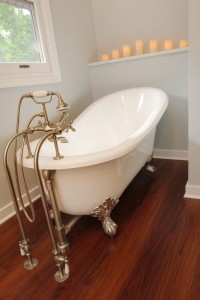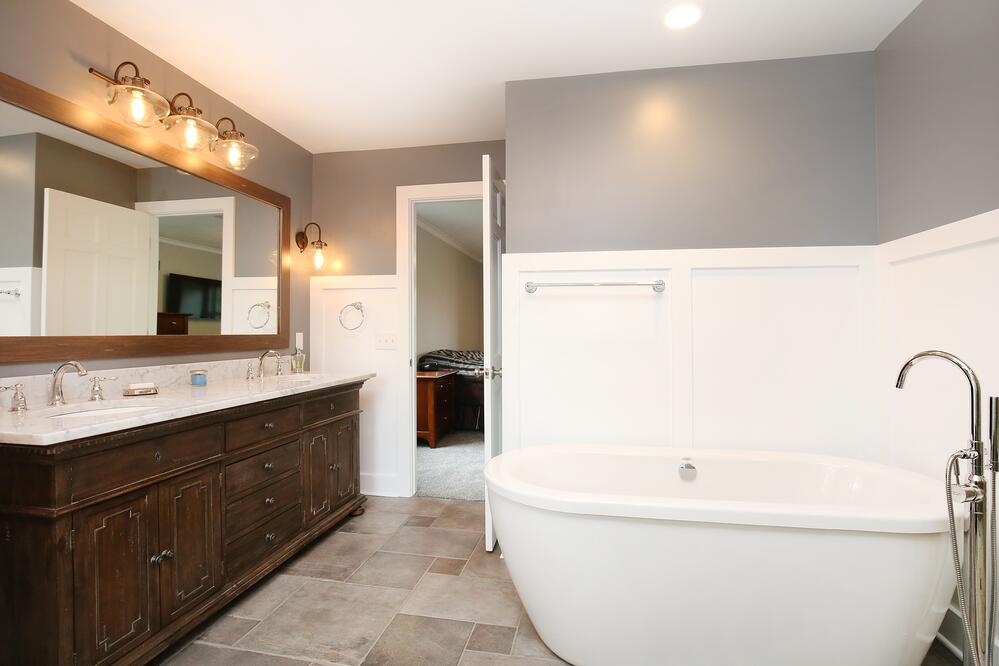Freestanding tubs add a touch of luxury to the bathroom. They are beautiful to look at and the ideal spot to relax and soak the stresses of the day away.
Freestanding tubs are like functional pieces of art in your bathroom. Add one to your bathroom design and you will be creating a beautiful focal point that will enhance the overall aesthetic of the space. And with the wide variety of size, shapes, and styles to choose from you can go with something traditional like a clawfoot tub or go a more modern route with a clean oval shaped tub. How do you choose which one to go with? Continue reading to get some tips on how to select the right freestanding tub for your bathroom.
 Size
Size
The size of your freestanding tub will depend on several things. First, how much floor space is available for the tub. Second, the tub itself must to be large enough for you to fit into and relax, so your height and weight are important factors. And third, you will need to make sure you can get the tub into your bathroom, which means ensuring that it can pass through the stairwells, doorways, and hallways. If your tub is particularly heavy, the floor will need to be reinforced to support the weight.
 Style
Style
Here’s a description of the options available:
Single ended – has one rounded end to support your back and a straight end where the faucet and drain would be located.
Double ended – both ends of the tubs are rounded to enable lounging on either side with a center drain and faucet.
Slipper – the ends of the tub are elevated and rounded to form the shape of a slipper. You can select a single or double ended style.
Pedestal or Skirted – as it sounds, this type of freestanding tub is sitting on top of a decorative pedestal or base.
Clawfoot – Although they have been around since the 1800’s they remain very popular today. These tubs sit on top of decorative feet and are available in single, double ended, and slipper style.
Shape – Tubs are available in oval or rectangular shapes. You can find options in both shapes that will lend themselves to traditional, transitional, or modern bathroom spaces.
Material
Acrylic - Lightweight and will not require floor reinforcement.
Cast Iron – Heavy, durable, hard to scratch, and easy to clean. They also retain heat for longer soaking!
Solid Surface – A high quality composite material with integral drains and built-in overflow systems.
Copper – For a unique shape or look, copper is a good option. It also holds heat and is resistant to mold and bacteria.
Stone – Carved from marble, granite or other stones, this tub will make a statement, is durable, and will retain heat naturally.
Faucets
Tub edge – the most economical option, these install right on the edge of your tub.
Self supporting – require floor space for installation and are great for adding style to your space.
Wall mounted – ideal for tubs that are close to walls.
For more bathroom design ideas, check out these blogs too!
Nine elements of great shower design
5 ideas for creating focal points in your bathroom
Topics: Featured, bathroom remodeling, free-standing tub, design tips, bathtub



